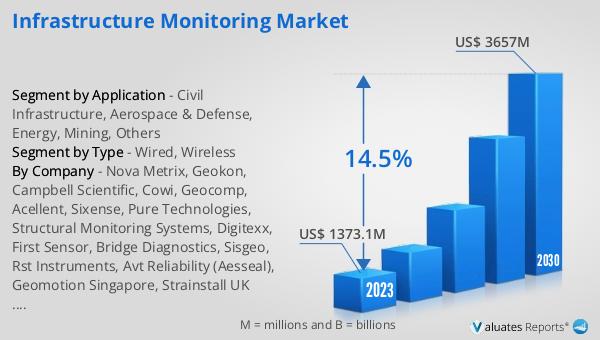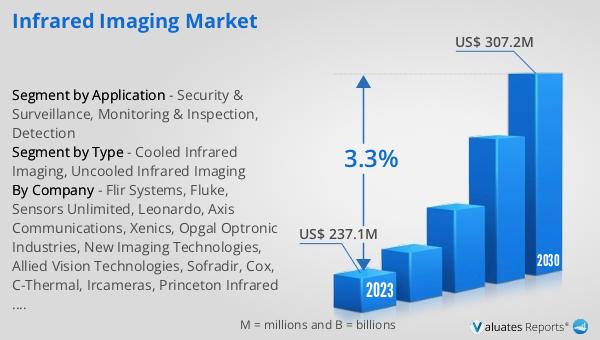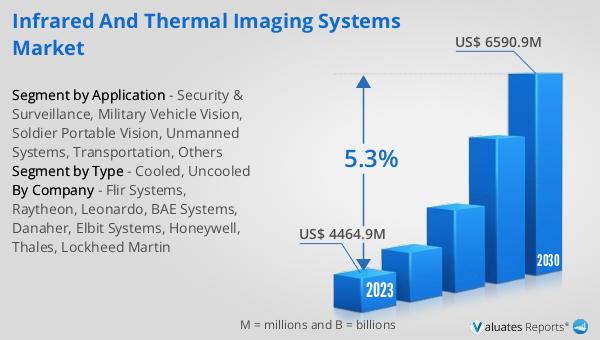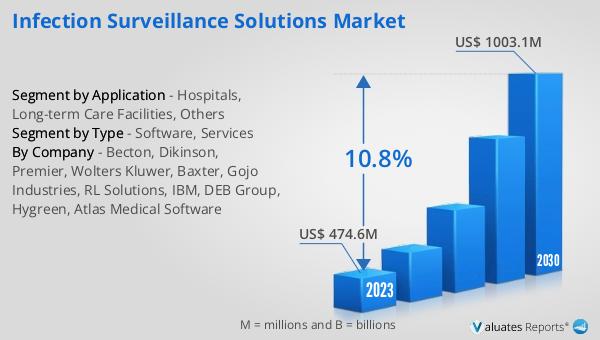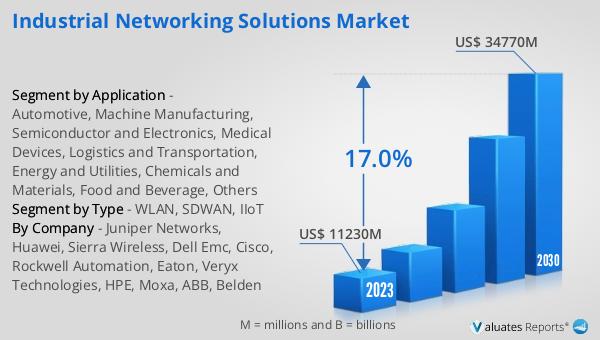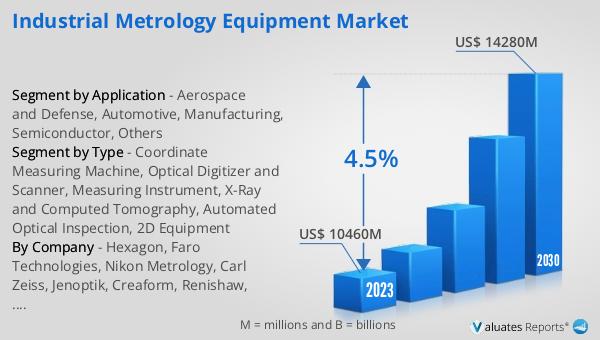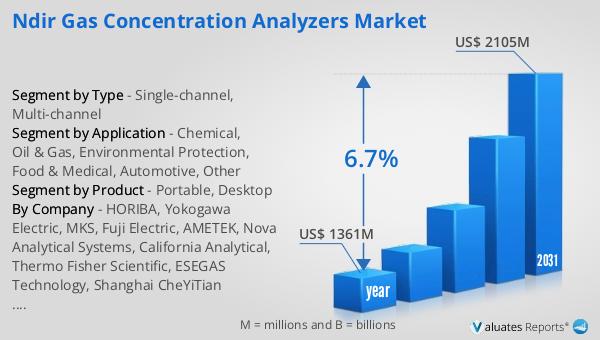What is Global InGaAs Camera Market?
The Global InGaAs Camera Market is a fascinating sector that revolves around the use of indium gallium arsenide (InGaAs) technology in cameras. This technology is particularly adept at capturing images in the short-wave infrared (SWIR) spectrum, which is beyond the capabilities of standard silicon-based cameras. The unique attribute of InGaAs cameras is their ability to see through certain types of materials, detect heat, and provide high-resolution images in low-light environments. As of 2023, the market for these advanced imaging devices was valued at approximately US$ 85 million. With a steady growth trajectory, it's expected to surge to US$ 154.3 million by the year 2030. This growth is fueled by the expanding applications of InGaAs cameras across various industries, including military and defense, industrial automation, and scientific research, among others. The technology's versatility and superior imaging capabilities underpin its increasing adoption, promising a compound annual growth rate (CAGR) of 8.3% over the forecast period from 2024 to 2030.
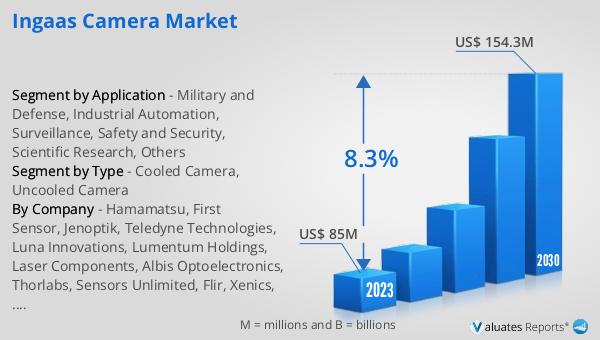
Cooled Camera, Uncooled Camera in the Global InGaAs Camera Market:
Diving deeper into the Global InGaAs Camera Market, we find it segmented into cooled and uncooled cameras, each catering to distinct needs and applications. Cooled InGaAs cameras are designed with a cooling mechanism to reduce thermal noise, which is crucial for applications requiring long exposure times and the highest image quality. This cooling extends the camera's sensitivity to longer wavelengths, making them ideal for specialized scientific research, deep-space observations, and high-end military applications where precision is paramount. On the other hand, uncooled InGaAs cameras, which operate without any cooling mechanism, offer a more compact and cost-effective solution for a wide range of applications. These include industrial automation, where they monitor processes invisible to the naked eye, and in safety and security, where they provide surveillance under varied lighting conditions. Despite their differences, both cooled and uncooled InGaAs cameras share the advantage of being able to capture images in the SWIR range, offering unique capabilities not available with traditional imaging technologies. The choice between cooled and uncooled options depends on the specific requirements of the application, including sensitivity, resolution, and environmental conditions, making the InGaAs camera market diverse and versatile.
Military and Defense, Industrial Automation, Surveillance, Safety and Security, Scientific Research, Others in the Global InGaAs Camera Market:
The usage of the Global InGaAs Camera Market spans several critical and innovative fields, showcasing the technology's versatility and importance. In military and defense, these cameras play a pivotal role in night vision systems, target acquisition, and surveillance, offering the ability to see through challenging conditions such as fog, smoke, and camouflage. Industrial automation benefits from InGaAs cameras by enabling precise monitoring and control of manufacturing processes, especially in environments not visible to the naked eye, thus enhancing efficiency and safety. In the realm of surveillance, safety, and security, these cameras contribute to advanced monitoring systems capable of operating in complete darkness or through obstructions, providing a new level of security for both public and private spaces. Scientific research leverages the unique capabilities of InGaAs cameras for a variety of applications, from studying celestial bodies in astronomy to observing chemical reactions in laboratories. Other sectors, including agriculture for monitoring crop health, and healthcare for advanced diagnostics, also utilize InGaAs technology for its ability to provide detailed images beyond the visible spectrum. The broad applicability of InGaAs cameras underscores their significance in advancing not only technological capabilities but also in improving safety, security, and knowledge in multiple domains.
Global InGaAs Camera Market Outlook:
The market outlook for Global InGaAs Cameras presents a promising future, with the sector's valuation at US$ 85 million in 2023, and an expected rise to US$ 154.3 million by 2030. This growth trajectory, marked by a compound annual growth rate (CAGR) of 8.3% during the forecast period from 2024 to 2030, underscores the increasing demand and adoption of InGaAs camera technology across various industries. The surge in market value is indicative of the expanding applications and reliance on these cameras for their unique ability to capture images in the short-wave infrared spectrum. This capability is crucial for a multitude of applications, ranging from military and defense to industrial automation and scientific research, driving the market's growth. The anticipated increase in market size reflects the technology's evolving role and its potential to revolutionize how we perceive and interact with the world around us, especially in scenarios where traditional imaging solutions fall short.
| Report Metric | Details |
| Report Name | InGaAs Camera Market |
| Accounted market size in 2023 | US$ 85 million |
| Forecasted market size in 2030 | US$ 154.3 million |
| CAGR | 8.3% |
| Base Year | 2023 |
| Forecasted years | 2024 - 2030 |
| Segment by Type |
|
| Segment by Application |
|
| Production by Region |
|
| Consumption by Region |
|
| By Company | Hamamatsu, First Sensor, Jenoptik, Teledyne Technologies, Luna Innovations, Lumentum Holdings, Laser Components, Albis Optoelectronics, Thorlabs, Sensors Unlimited, Flir, Xenics, New Imaging Technologies, Allied Vision Technologies, Raptor Photonics, Sofradir, Princeton Instruments, Photon, Fermionics Opto-Technology, AC Photonics, GPD Optoelectronics, QPHOTONICS, Episensors, IRCameras |
| Forecast units | USD million in value |
| Report coverage | Revenue and volume forecast, company share, competitive landscape, growth factors and trends |
